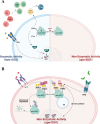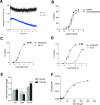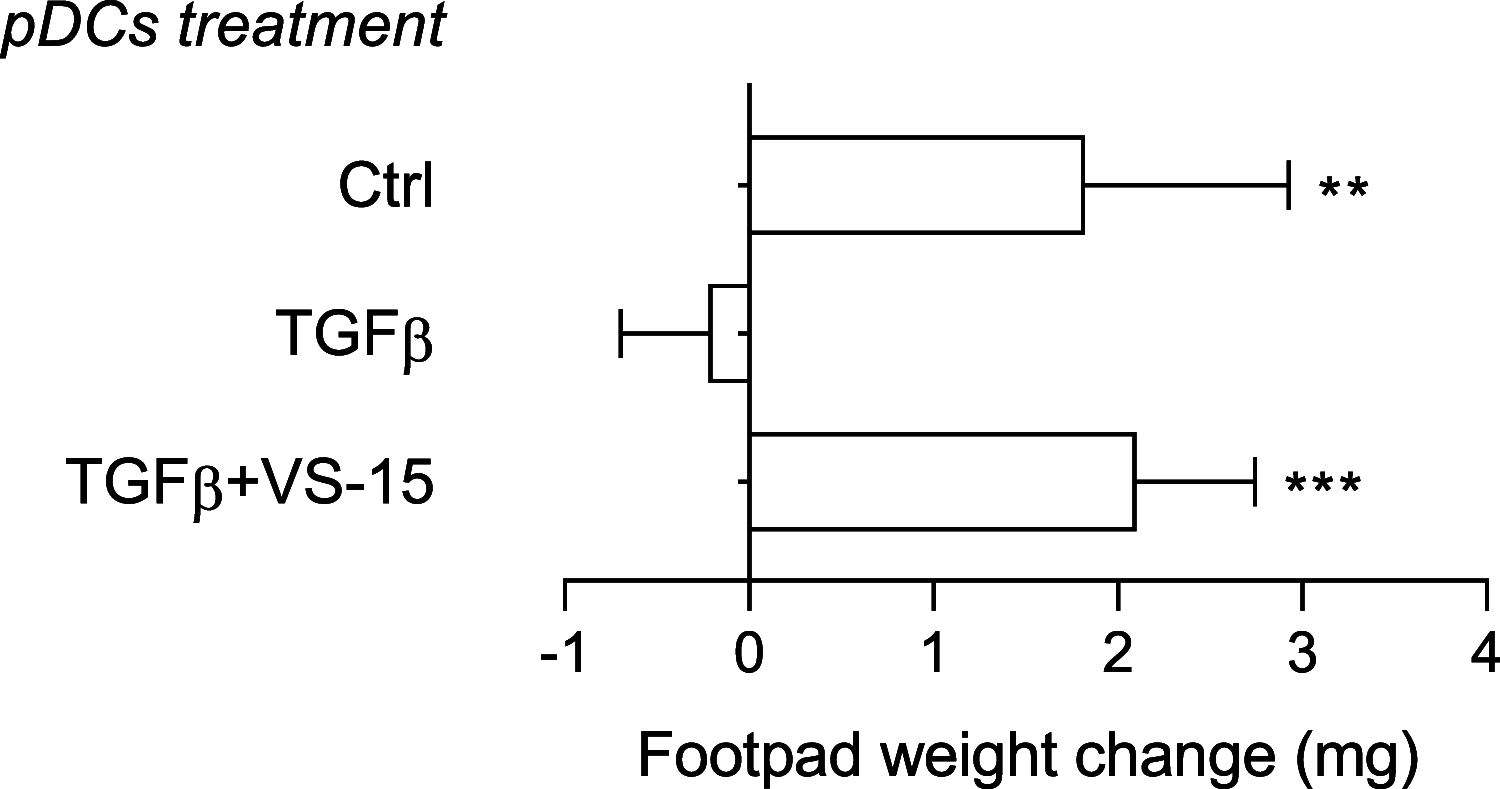Identification of a Compound Inhibiting Both the Enzymatic and Nonenzymatic Functions of Indoleamine 2,3-Dioxygenase 1
- PMID: 39421661
- PMCID: PMC11480892
- DOI: 10.1021/acsptsci.4c00265
Identification of a Compound Inhibiting Both the Enzymatic and Nonenzymatic Functions of Indoleamine 2,3-Dioxygenase 1
Abstract
Indoleamine 2,3-dioxygenase 1 (IDO1) plays a key role in tumor immune escape. Besides being a metabolic enzyme that catalyzes the first step of tryptophan catabolism, it also acts as a signal-transducing protein, whose partnering with tyrosine phosphatase Src homology 2 (SH2) domain-containing protein tyrosine phosphatase substrate (SHPs) and phosphatidylinositol-3-kinase (PI3K) regulatory subunit p85 promotes the establishment of a sustained immunosuppressive phenotype. While IDO1 inhibitors typically interfere with its enzymatic activity, we aimed to discover a more effective modulator capable of blocking not only the enzymatic but also the signaling-mediated functions of IDO1. By virtual screening, we identified the compound VS-15, which selectively binds the heme-free form of IDO1, inhibits its enzymatic activity, and reduces the IDO1-mediated signaling pathway by negatively interfering with its partnership with SHPs and PI3K regulatory subunit p85 as well as with the IDO1 anchoring to the early endosomes in tumor cells. Moreover, VS-15 counteracts the TGF-β-mediated immunosuppressive phenotype in dendritic cells and reduces the level of inhibition of T cell proliferation by suppressive monocytes isolated from patients affected by pancreatic cancer. Herein, we describe the discovery and characterization of a small molecule with an unprecedented mechanism of action, capable of inhibiting both the enzymatic and nonenzymatic activities of IDO1 by binding to its apo-form. These results pave the way for the development of next-generation IDO1 inhibitors with a unique competitive advantage over the currently available modulators, thereby opening therapeutic opportunities in cancer immunotherapy.
© 2024 The Authors. Published by American Chemical Society.
Conflict of interest statement
The authors declare no competing financial interest.
Figures










References
-
- Bessede A.; Gargaro M.; Pallotta M. T.; Matino D.; Servillo G.; Brunacci C.; Bicciato S.; Mazza E. M.; Macchiarulo A.; Vacca C.; Iannitti R.; Tissi L.; Volpi C.; Belladonna M. L.; Orabona C.; Bianchi R.; Lanz T. V.; Platten M.; Della Fazia M. A.; Piobbico D.; Puccetti P. Aryl hydrocarbon receptor control of a disease tolerance defence pathway. Nature 2014, 511 (7508), 184–190. 10.1038/nature13323. - DOI - PMC - PubMed
LinkOut - more resources
Full Text Sources
Research Materials
Miscellaneous
